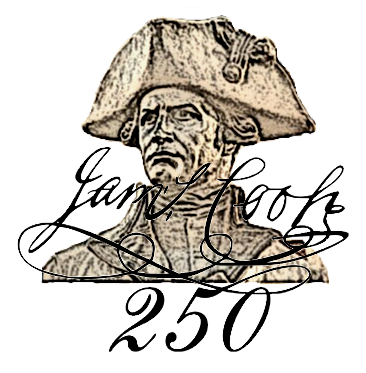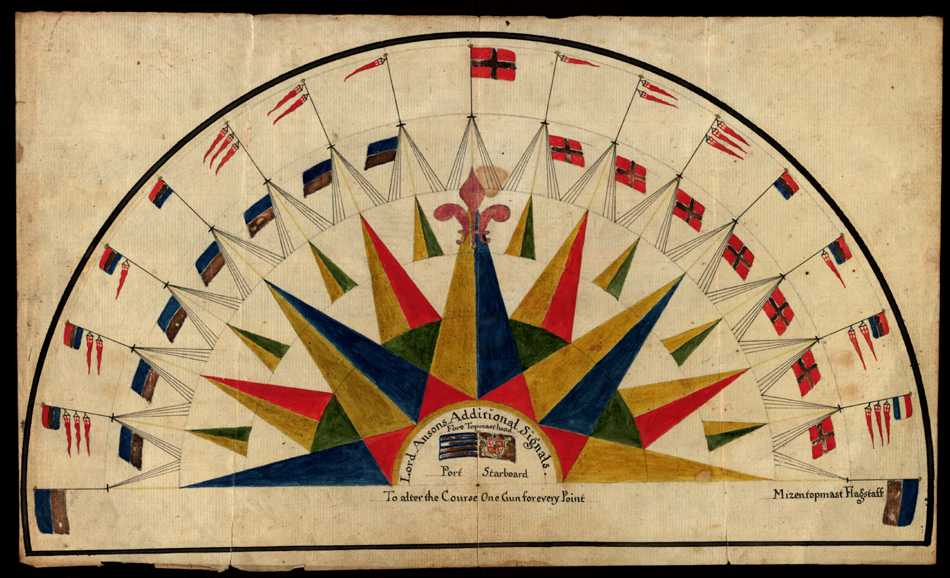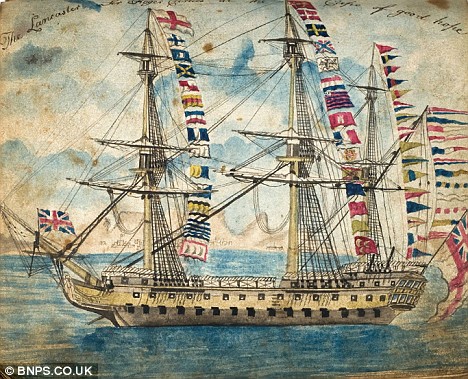Signal Book HOL/17, 1760 (Royal Museums Greenwich)
“Signals extracted from the General Printed Sailing & Fighting Instructions of Admiral Saunders dated 13 May 1760, with insertion giving Lord Anson’s additional signals.
The Caird Library and Archive Collection contains hundreds of signal books. Some are pocket notebooks, while others are larger printed books of theoretical instruction. Many are beautifully illustrated. They reveal the rapid development of naval signalling, flags and battle tactics in the 18th and early 19th centuries. The Tunstall (TUN) and Holland (HOL) collections alone demonstrate the number of different signalling systems practised before standardisation was achieved at the end of the 18th century.
The Signal Book HOL/17 is an early signal book from 1760 with Admiral Saunders’s signals, with an illustrated insertion showing Lord Anson’s signals. The book shows early types of signals, which are short and few: ‘The Whole Fleet to tack together’; ‘To form the Line – a Head, A Breast’. Admiral George Anson (1697–1762) issued his Instructions in 1747 as part of naval reforms, and Admiral Saunders used some for his fleet’s use. I have chosen this book as it demonstrates how simple the instructions given to the fleet were before battle.![]()
![]()
Fleet manoeuvres before battles were designed to gain a windward position, despite sudden changes in weather such as a change or drop in wind, changing tides or currents, or sudden fog or darkness. Everything depended on the wind. Admirals had to organise their fleet before attacking, each captain following the course set by the admiral’s ship, usually in a line, tacking across the wind while avoiding collision. Fleets spent hours positioning themselves into the line of battle before approaching and attacking, or chasing the enemy.
Systems of communication between ships were rudimentary; as fleets became larger, admirals found it impossible to signal in battle to give instructions, particularly in bad weather, fog and at night. Lanterns and guns were used when visibility was poor. Night battles were unusual but did occur; the illustration shows HMS Endymion engaging the frigate USS President at night, 1815 (TRO/103/1).
Although the use of flags for basic signalling is known from medieval times, use in England was limited. Flags were made of ‘bunting’, thin woollen cloth that was strong but light and flew well. In 1664 Samuel Pepys supplied flags to the Navy, despite being an official of the Navy Board. Pepys’s flags were made of cheaper heavier calico that frayed and did not fly well. The Navy refused to take more and Pepys was left with calico that had to be used for his servants’ and wife’s dresses.
Signalling systems were more developed on the continent; the French were ahead in designing a more sophisticated system for naval signalling in the later 17th century. The French navy had their first official signal book in 1763, the Dutch in 1779. English admirals began to develop a more detailed system of signalling but had no unified system. Each drew up a system for their own fleet reflecting their individual battle tactics, and officers made their own notes. There were a limited number of flags, and different positions on masts created different signals.
‘Fighting Instructions’ were issued throughout the 17th century but were general. Instructions ‘for the better ordering of the Fleet in Fighting’ were issued in 1653 by Blake, Dean and Monck, combining sailing and fighting instructions for the first time, and ‘Sailing and Fighting Instructions’ began to be issued regularly. The Caird Library holds several printed in the late 1600s.
In 1673 The Duke of York’s Instructions for the better Ordering of His Majesties’ Fleet in Sayling were issued, with some flag signals. In 1714 Jonathan Greenwood, an opportunist member of the Stationers’ Company, printed privately a signal book with flags at the top of pages and signals set out below for sale to naval officers for them to complete.
Reforms in signalling continued, driven by naval reforms, lack of success in the American War of Independence and anticipation of war with France. Numbers of flags and signals increased rapidly causing confusion. Some systems gained in popularity and some did not. Admiral Sir Charles Knowles (1754–1831), rear admiral in command of the Mediterranean fleet, developed A set of Signals for a Fleet on a Plan Entirely New in 1777, suggesting new numbered signals and tactics for battle. Admiral Kempenfelt (1718–82) researched the new French numerary system, producing one for his fleet. Signal flags were allocated numbers, with set messages given specific signals, increasing the variety of signals that could be given. His signal book was published in 1779 but rejected by other officers as too complex.
Lord Howe (1726–99) created a printed signal book for his own fleet in the North American Station during the War of American Independence. Howe’s Signal Book for Ships of War, printed in 1776, was followed by additional and night signals in 1777 and 1778. Around 1780, Howe drew up his Numerary system in two parts: for the admiral, and for private ships. He was First Lord of the Admiralty (1783–88) and much respected as a naval commander.
Despite the popularity of his system, other systems were still developed. Admiral Philip Patton produced a controversial but old-fashioned system in 1787 (Signal book TUN/43). Competition was fierce and Patton proposed a jury of naval flag officers to select the best system, but Howe’s system was proving to be most popular. His colleague Lord Hood issued 90 numerical signals in 1787 (HOL/39), and a further ‘A New Arrangement of Howe’s’ in 1793.
After 1790, signalling codes became more standardised. Howe’s The Signal Book for the Ships of War was published in 1790 and adopted by the Royal Navy, each admiral adding only a few individual signals. In 1799 the Admiralty finally issued The Signal book for the Ships of War, a standard Signal code system. Admiral Nelson wrote to Lord Howe after his victory in 1798 at the Battle of the Nile (fought partly at night) saying he was indebted to him for his signals. Night signals are shown in the signal book from HMS Mercury from the late eighteenth century (MER/9), showing the arrangements of lanterns.
Ship flying signals, from the diary of George Hodge, 1790-1833
In 1800 Captain Sir Home Popham published his more sophisticated system Telegraphic Signals on Marine Vocabulary with a coded vocabulary of a thousand words and set phrases. His system was finally adopted by the Admiralty in 1816.
Signal books were much prized by their authors and were kept secret, to be destroyed rather than fall into enemy hands. Many signal books have been kept over the years as prized family heirlooms, evidence of an ancestor’s careful preparation for battle, and deserve more study.”
Read more at Royal Museums Greenwich


